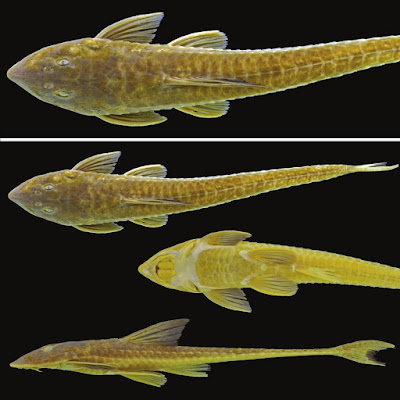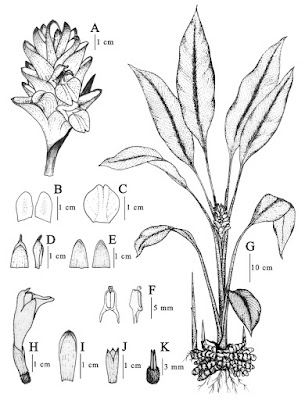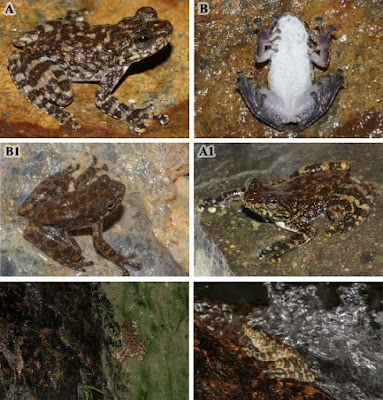[Most Recent Entries] [Calendar View]
Tuesday, July 20th, 2021
| Time | Event | ||
| 7:48a | [Ichthyology • 2021] Loricariichthys melanurus • A New Species of the Loricariid Catfish Genus Loricariichthys (Siluriformes: Loricariidae) from Eastern Brazil
Abstract A new species of Loricariichthys is described from the Rio Itabapoana and Rio Itapemirim basins, two small, adjacent, yet independent, coastal drainages in south Espírito Santo State. Loricariichthys melanurus, new species, is distinguished from most congeners by the anterior margin of abdominal plates falling at or slightly ahead of the transverse line between the pectoral-fin spines, not reaching the level of the lower end of the gill slits, further on other features of external morphology. The new species can be differentiated from L. castaneus, the most similar and geographically closest species, by the possession of a conspicuous black marginal band at the distal portion of middle and lower caudal-fin rays and a darkened distal half of dorsal fin, which are absent in the former. Samples analyzed of the two species have a COI pairwise genetic distance of 4.6%. The paleodrainage reconstruction inferred for a sea-level-retreat of maximum glacial period of the Pleistocene suggests that neither the Itabapoana and Itapemirim Rivers, nor the other coastal rivers of eastern Brazil, where L. castaneus occurs, have been in contact during this period. Loricariichthys melanurus, new species Etymology.— The specific epithet of Loricariichthys melanurus from the Greek lekar (melas), black, and otqa (oura), tail, referring to the black marginal band of the caudal fin. An adjective. Roberto E. Reis, Fábio Vieira and Edson H. L. Pereira. 2021. A New Species of the Loricariid Catfish Genus Loricariichthys (Teleostei: Siluriformes) from Eastern Brazil. Ichthyology & Herpetology. 109(2):557-566. DOI: 10.1643/i2020013 | ||
| 7:56a | [Botany • 2021] Curcuma wanenlueanga (Zingiberaceae) ว่านเอ็นเหลือง • A New Species of Curcuma from Thailand
Abstract Curcuma wanenlueanga Saensouk, Thomudtha & Boonma, a new species of Curcuma subgenus Curcuma (Zingiberaceae) from Thailand was described with detailed illustrations, and photographs. The dominant morphological description is terminal inflorescence, leaf adaxially green with reddish-purple along the midrib, leaf-sheath with reddish-brown tinge. Moreover, the color and smell rhizome of C. wanenlueanga has yellow with a darker core internally. It is distributed in Mae Hong Son Province, Northern Thailand, and cultivated throughout the country, i.e. Nakhon Nayok, Maha Sarakham, Chiang Mai, Tak, Chantaburi, Suratthani, and Kanchanaburi Provinces. It is used as Thai traditional medicinal. It grows in in sandy loam soil and well-drained in the mixed-deciduous forest, at elevation 700-900 m asl. It is accompanied by a revised key to 26 species of Curcuma subgenus Curcuma from Thailand. Keywords: Curcuma, new species, Thailand, Zingiberaceae Curcuma wanenlueanga Saensouk, Thomudtha & Boonma, sp. nov. subgenus Curcuma Curcuma wanenlueanga is belonged to the subgenus Curcuma according to the presence of epigynous glands, inflorescence with coma bracts, flowers closed-form, anther spurs acute, and downward-pointed. The morphological description and producing terminal inflorescence of C. wanenlueanga make it similar to C. longa and C. amada, but differ in having leaf adaxially green with reddish-purple along the midrib, leaf-sheath with reddish-brown tinge, whereas C. longa and C. amada are green without reddish tinge. Moreover, the color and smell of their rhizome can easily distinguishable from each other which C. amada has light yellow, white towards the periphery, and smell of green mango while C. wanenlueanga has yellow with a darker core internally and C. longa has deep orange-yellow internally, slightly to strongly aromatic respectively without the smell of green mango as in C. amada (Table 1). Etymology: The specific epithet ‘wanenlueanga’ derived from Thai vernacular name of this species which “wan” means “herbs”, “en” means “tendons” referred to its medicinal properties used in traditional medicine to treat beriberi related to tendons and "lueang" means "yellow" referred to its yellow rhizome. Vernacular name: “Wan-En-Lueang - ว่านเอ็นเหลือง” in Thai language. Surapon Saensouk, Thawatphong Boonma, Adisak Thomudtha, Pariya Thomudtha and Piyaporn Saensouk. 2021. Curcuma wanenlueanga (Zingiberaceae), A New Species of Subgenus Curcuma from Thailand. Biodiversitas: Journal of Biological Diversity. 22(7); 2988-2994. DOI: 10.13057/biodiv/d220752 | ||
| 9:54a | [Herpetology • 2021] Amolops teochew • A New Species of Torrent Frog (Anura, Ranidae) from the Coastal Hills of Southeastern China
Abstract The Amolops populations in the coastal hills in eastern Guangdong and southern Fujian, China, were controversially recorded as A. hongkongensis or A. daiyunensis before. In this study, based on the morphological examination and phylogenetic analysis of the specimens from these areas, a new species, Amolops teochew sp. nov., is described. Amolops teochew sp. nov. can be distinguished reliably from A. hongkongensis and A. daiyunensis by a combination of characteristics morphologically and distinct divergences genetically. The description of the new species highlights the Amolops diversity in the limited hilly region of southeastern China, which is remarkably higher than that in the more extensive inland region of southeastern China. Keywords: Amolops daiyunensis group, Amolops hongkongensis, Amolops teochew sp. nov., biogeography, chresonymy, morphology, phylogeny, Amphibia Zhao-Chi Zeng, Jian Wang, Zhi-Tong Lyu and Ying-Yong Wang. 2021. A New Species of Torrent Frog (Anura, Ranidae, Amolops) from the Coastal Hills of Southeastern China. Zootaxa. 5004(1); 151-166. DOI: 10.11646/zootaxa.5004.1.6 |
| << Previous Day |
2021/07/20 [Calendar] |
Next Day >> |















